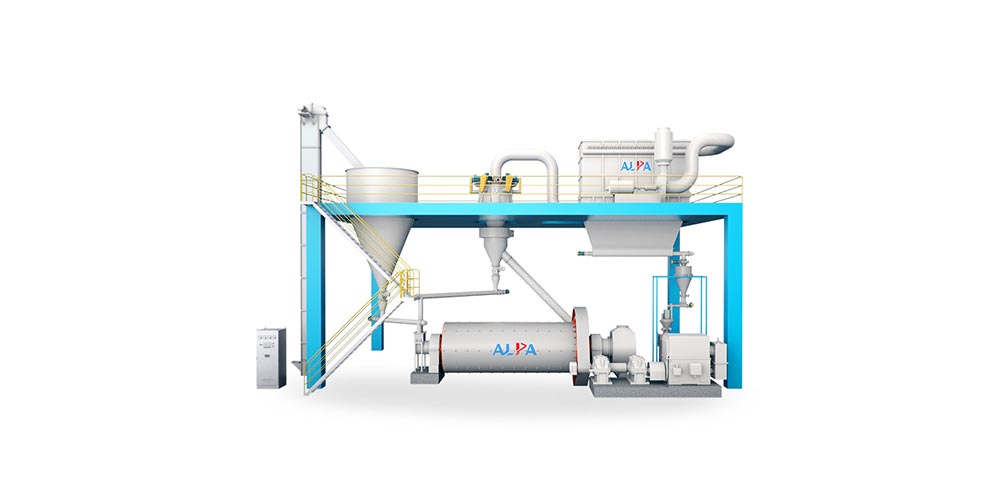Application progress of ball mill in the field of new materials

Since its introduction more than 100 years ago, ball mills have been widely used in industries such as chemical industry, mining, building materials, electric power, medicine and national defense industry. Especially in the fields of complex mineral processing, powder surface modification, powder activation, functional powder synthesis, mechanical alloying, and ultrafine powder preparation, the mechanical ball milling method has a broad research and application market. .
The ball mill has the characteristics of simple structure, continuous operation, strong adaptability, stable performance, suitable for large-scale and easy to realize automatic control. Its crushing ratio can range from 3 to 100. It is suitable for processing various mineral raw materials and wet grinding. And dry grinding can be used as its abrasive method.
Research progress of mechanical ball milling method in the field of new materials
(1) Lithium battery materials
SiOx materials were synthesized by mechanical ball milling in air atmosphere. Used as anode material for lithium-ion batteries, the volume specific capacity of SiOx can reach 1487mAh/cc, which is more than twice that of graphite; its first Coulombic efficiency is higher than that of untreated SiO, up to 66.8%; and it has excellent cycle stability. After 50 cycles at a current density of 200mA/g, the capacity stabilizes at around 1300mAh/g. The results show that SiOx prepared by this method has practical possibility.
(2) Rare earth materials
In terms of rare earth polishing powder, the mechanical ball milling method not only increases the shear force during the chemical reaction, increases the diffusion rate of particles, is conducive to the refinement of reactants and products, but also avoids the introduction of solvents and reduces It eliminates the intermediate precipitation process, reduces the influence of many preparation conditions in the preparation process of polishing powder, and greatly broadens the research scope of polishing materials. In terms of rare earth catalytic materials, the mechanical ball milling method has a simple preparation process and mild conditions, and can process materials in large quantities.
(3) Catalytic materials
In order to change the particle size of TiO2 and improve its photocatalytic performance, Qi Dongli et al. used high-energy ball milling to process TiO2 powder and studied the effect of ball milling time on the micromorphology, crystal structure, Raman spectrum, fluorescence spectrum and photocatalytic performance of the sample. The degradation rate of TiO2 samples after ball milling is higher than that of non-ball milled samples, and the degradation rate of the sample ball milled for 4 hours is the highest, indicating that it has the best photocatalytic performance.
(4) Photovoltaic materials
The chemical reduction-mechanical ball milling method was used to prepare bright flaky silver powder, and the effects of ball milling method, ball milling time and ball milling speed on the parameters and properties of flaky silver powder were studied. The results show that wet ball milling has higher flake formation efficiency, but the flake silver powder prepared by dry ball milling has a larger flake diameter and a brighter silver appearance.
(5) Perovskite materials
Lead-free double perovskite Cs2AgBiBr6 nanopowder was prepared using a mechanical ball milling process. As the ball milling time increases, the Cs2AgBiBr6 nanopowder finally reaches the pure phase, the particle size gradually decreases to about 100nm, and the particle shape changes from rod-shaped to round particles.
(6) Adsorption materials
Non-metallic minerals such as limestone, kaolin, and serpentine are activated through ball milling to strengthen their ability to react with harmful components such as copper, lead, and arsenic in the water phase. This enables an efficient, simple, and low-cost new sewage purification process to be applied to the sewage purification process. Selective precipitation, separation and enrichment recovery of target metal components.
Compared with other methods, during the process of chemical reaction, the ball milling method can significantly reduce the reaction activation energy, reduce the powder particle size, increase the powder activity, improve the particle size distribution, enhance the bonding between interfaces, promote solid ion diffusion and It induces low-temperature chemical reactions to improve the density and optical, electrical, thermal and other properties of the material. The equipment is simple, the process is easy to control, the cost is low, and there is less pollution. It is an energy-saving and efficient material preparation technology that is easy for industrial production.
